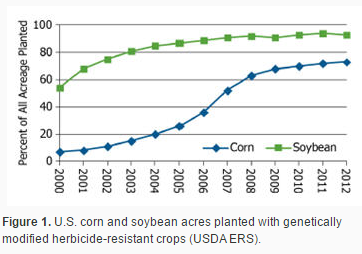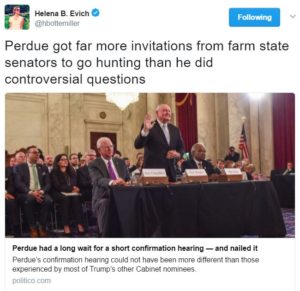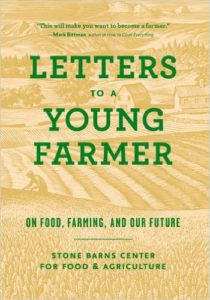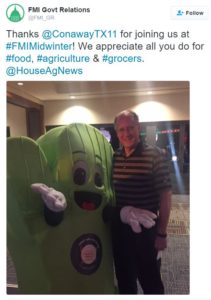I can’t find this interview on either the Politico or Western Growers’ websites, but think it’s worth a read. I’ve highlighted some of the key parts in red.
How quickly does the produce industry need immigration reform and what will the consequences be if something doesn’t get done in the next year or so?
It’s something we need to get done immediately, but we know, from our negotiations of the 2013 Senate bill, that it’ll probably take three years from the time it’s enacted for it to be implemented. Now maybe that can be condensed a bit and we’re further along with H-2A and with E-verify then we were before, but the fact is that the labor shortages we had for the last decade are now being severely exacerbated by the lack of foreign labor willing and interested in coming to the United States or in some cases even staying in the United States.
How in danger are produce growers of being put out of business by the current labor situation?
I think several of the smaller to midsize operators are in danger of either having to cease farming or sell their operations to larger producers who have the wherewithal to withstand some of the things that are happening because they are able to invest in and develop more mechanical harvesting and other robotic operations. In many cases it will take the farmer a million dollars or more just to develop a harvesting machine for a particular commodity.
You mentioned the so-called 2013 Gang of Eight legislation. Why has Congress not been able to bring up another bill like this since?
For a couple reasons. It was clear that the House of Representatives, when we passed the Senate bill in 2013, had absolutely no interest in passing an immigration bill, although the Judiciary Committee tried to get one passed. There really wasn’t interest by some of the Republicans in having anything that could possibly lead to a conference with the Senate bill. I think that’s why they never passed even a border enforcement bill, which we know has been a key point, certainly in this last election and for this administration. Then we had an election, and nothing was going to get done. Everybody wanted to wait to see what happened with the ratio of Senate and House members and the new president.
What’s different about the environment now that we simply can’t roll back out the 2013 bill?
The difference is that President Donald Trump made immigration a centerpiece of his campaign and, since he’s been in office, it has remained one of the more widely discussed issues and topics that has to be addressed. The administration has been focused mainly on border protection and interior enforcement more so than it has been on developing a program for existing workers or guest workers. But since these other measures are taking place, and because the president has said, either directly or through others in his cabinet, including Secretary [Sonny] Perdue, that he understands the need of the agricultural community for farm workers. He wants the industry to flourish and he is not targeting farm workers, even those who have come here illegally. He’s targeting those people who have committed crimes in addition to coming here illegally, especially dangerous felons and people who would threaten our national security.
So would enforcement have to be part of any immigration reform legislation in order to get passed by Congress?
I believe these issues all would have to be addressed in addition to what we did in 2013. For agriculture, the 2013 Senate bill — although there were a lot of things we didn’t like — was an excellent bill for agriculture, and what we now have to convince legislators of is, although they have political considerations to take into account, that agriculture’s position is not partisan, it’s economic. We’re obviously willing to pay higher wages, as you’ve seen the wages escalate in California alone. The average wage is $12 or $13 per hour in California, far more than the minimum wage, but we’re not getting more farm workers, we’re just having farm workers play musical chairs, from Farmer A to Farmer B, to get a little bit better deal on wages or on benefits.
Some people say farmers just have to pay more for their labor.
Anyone who is an enlightened observer of immigration reform and agriculture knows that’s not true. Wages have continually gone up. And the supply of labor keeps diminishing. … It’s not the wages, it’s the work. This is a difficult job. This is seasonal. This is migratory. This is not full time. This requires people to be away from their families. So that’s not very attractive work. And money alone isn’t going to do it, because farm workers aren’t raising their kids to be farm workers and certainly people here lawfully in the United States are not willing to do that kind of work when they have so many economic opportunities. As you know, Mexico is now importing farm workers [from other countries], because even in Mexico they are seeing better economic opportunities than being a farm worker.
There have been several bills introduced already in the new Congress that would address different aspects of immigration reform. Are there any components of these bills that are workable for the ag industry?
While the bills [that have been introduced by the current Congress] address certain needs for immigration, I don’t believe they have any chance of passing because they have to be part of a more complete immigration bill. I know that Sen. [Dianne] Feinstein [D-Calif.] in our 2013 bill recalled the “blue card” provision which allowed our existing workers who had come to us with false documents if they had worked the last couple of years before the enactment of the legislation and continue to work three to five years, depending on the number of hours they worked, that they would have a pathway to a green card. And in the meantime they would be considered “blue card” holders. That was an important bill because we are very concerned about existing workers. But will a bill introduced by only one party, the Democratic Party, that asks for a path to citizenship be something the Republicans are likely to pass? I think that’s highly doubtful. But there are important pieces of the entire puzzle that we need to put together so we can look at the whole picture.
Is there a particular type of lawmaker needed to introduce the bill you want?
Obviously, it has to be someone who has the respect of the [Republican] party and someone who understands the industry and its concerns. It has to be someone who understands what’s possible to get passed in a committee or on the floor and, we would hope, someone who believes that what is negotiated in the House may be modified if the Senate passes a different bill. It has to be someone who truly wants to see immigration reform done and understands how desperate our labor situation is, especially in the produce industry.
Is there anything the administration can do without legislation to help the problem?
Clearly we’ve been trying to get changes in H-2A, though we are hopeful, with new secretaries of Labor and Agriculture, that we are going to be able to get H-2A reform. If it takes three years to implement a new immigration bill, the only thing we are going to have is H-2A. The program has to be more economical and speedier. We now have to go through four agencies — the state workforce agency, the Department of Labor, the Department of State, the Department of Homeland Security — and by the time each one does their thing separately … If we could just get them to act concurrently instead of consecutively, and get those timetables done, we’d have a much better chance of getting these workers when we need them. Because we have to file these papers months in advance of our season, the farmer has to guess what the weather is going to be like, and that’s an impossible situation. We can’t have workers appear in our fields after the time for harvest. Because we have to have housing, we also have to have that inspected before we can get our workforce approved.










